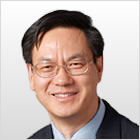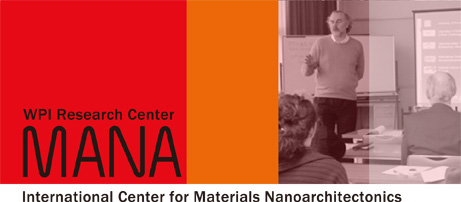Zhong Lin WANG

- Affiliation:
- Specialty:
- Nanomaterials, Nanodevices, Nanogenerators and Nanopiezotronics
- Academic degree:
- Ph.D. Arizona State University (1987)
Educational and Working History
| 2006 | - | Present | College of Engineering Distinguished Professor Georgia Institute of Technology |
| 2004 | - | Present | Regents' Professor Georgia Institute of Technology |
| 1999 | - | 2004 | Professor of Materials Science and Engineering Georgia Institute of Technology |
| 1995 | - | 1999 | Associate Professor School of Materials Science and Engineering Georgia Institute of Technology |
| 1990 | - | 1993 | Research Associate Professor Metals and Ceramics Division Oak Ridge National Laboratory and University of Tennessee |
| 1989 | - | 1990 | Research Fellowship U.S. Department of Energy Metals and Ceramics Division Oak Ridge National Laboratory |
| 1993 | - | 1995 | Research Scientist, National Institute of Standards and Technology. |
Research History
Zhong Lin (ZL) Wang is a Regents' Professor, COE Distinguished Professor and Director, Center for Nanostructure Characterization and Fabrication, at Georgia Tech. He has authored and co-authored four scientific reference and textbooks and over 500 peer reviewed journal articles, 55 review papers and book chapters, edited and co-edited 14 volumes of books on nanotechnology, and held 20 patents and provisional patents. Dr. Wang is the world's top 25 most cited authors in nanotechnology from 1992-2002 (ISI, Science Watch). His entire publications have been cited for over 18,000 times. The H-index of his publications is 64. Wang discovered the nanobelt in 2001, which is considered to be a ground-breaking work. The paper on nanobelt was the second most cited paper in chemistry in 2001-2003 world-wide. His paper on piezoelectric nanosprings was one of the most cited papers in materials science in 2004 world-wide. His recent invention of world's first nanogenerator will have profound impacts to implantable biosensors and molecular machines/robotics. In 1999, he and his colleagues discovered the world's smallest balance, nanobalance, which was selected as the breakthrough in nanotechnology by the America Physical Society. He was elected to the European Academy of Science (www.eurasc.org) in 2002, fellow of the World Innovation Foundation (www.thewif.org.uk) in 2004, fellow of American Physical Society in 2005, fellow of AAAS in 2006, has received the 2001 S.T. Li prize for Outstanding Contribution in Nanoscience and Nanotechnology, the 2000 and 2005 Georgia Tech Outstanding Faculty Research Author Awards, Sigma Xi 2005 sustain research awards, Sigma Xi 1998 and 2002 best paper awards, the 1999 Burton Medal from Microscopy Society of America, and 1998 China-NSF Oversea Outstanding Young Scientists Award. His most recent research focuses on oxide nanobelts and nanowires, in-situ techniques for nano-scale measurements, self-assembly nanostructures, fabrication of nano devices and nanosensors for biomedical applications.
Selected Papers
- X.D. Wang, J.H. Song J. Liu, and Z L. Wang, 'Direct current nanogenerator driven by ultrasonic wave', Science, 316, (2007) 102-105.
- Zhong L. Wang and Jinhui Song, 2006, 'Piezoelectric Nanogenerators Based on Zinc Oxide Nanowire Arrays', Science, 312, 242-246.
- P.X. Gao, Y. Ding, W. Mai, W. L. Hughes, C. Lao and Z.L .Wang*, 'Conversion of Zinc Oxide Nanobelt into Superlattice-Structured Nanohelices', Science, 309, (2005) 1700-1704.
- X.Y. Kong, Y. Ding, R.S. Yang, Z.L. Wang, 'Single-crystal nanorings formed by epitaxial self-coiling of polar-nanobelts', Science, 303, (2004) 1348-1351.
- Z.W. Pan, Z.R. Dai and Z.L. Wang, 'Nanobelts of semiconducting oxides', Science, 291, (2001)1947-1949.
- X. Feng, D.C. Sayle, Z.L. Wang, S. Paras, B. Santora, T. Sutorik, T. X. T. Sayle, Y. Yang, Y. Ding, X. Wang, and Y.-S. Her, 'Converting Ceria Polyhedral Nanoparticles into Single-Crystal Nanospheres', Science, 312, (2006)1504-1508.
- H. Zeng, J. Li, J.-P. Liu, Z. L. Wang, and S. Sun, 'Exchange-coupled nanocomposites magnets by nanoparticle self-assembly', Nature, 420, (2002)395.
- P. Poncharal, Z.L. Wang, D. Ugarte and W.A. de Heer, 'Electrostatic deflections and electromechanical resonances of carbon nanotubes', Science, 283, (1999)1513-1516.
- S. Frank, P. Poncharal, Z.L. Wang, and W.A. de Heer, 'Carbon nanotube quantum resistors', Science, 280, (1998)1744-1746.
- T.S. Ahmadi, Z.L. Wang, T.C. Green, A. Henglein and M.A. El-Sayed, 'Shape-controlled synthesis of colloidal platinum nanoparticles', Science, 28, (1996)1924-1926.


